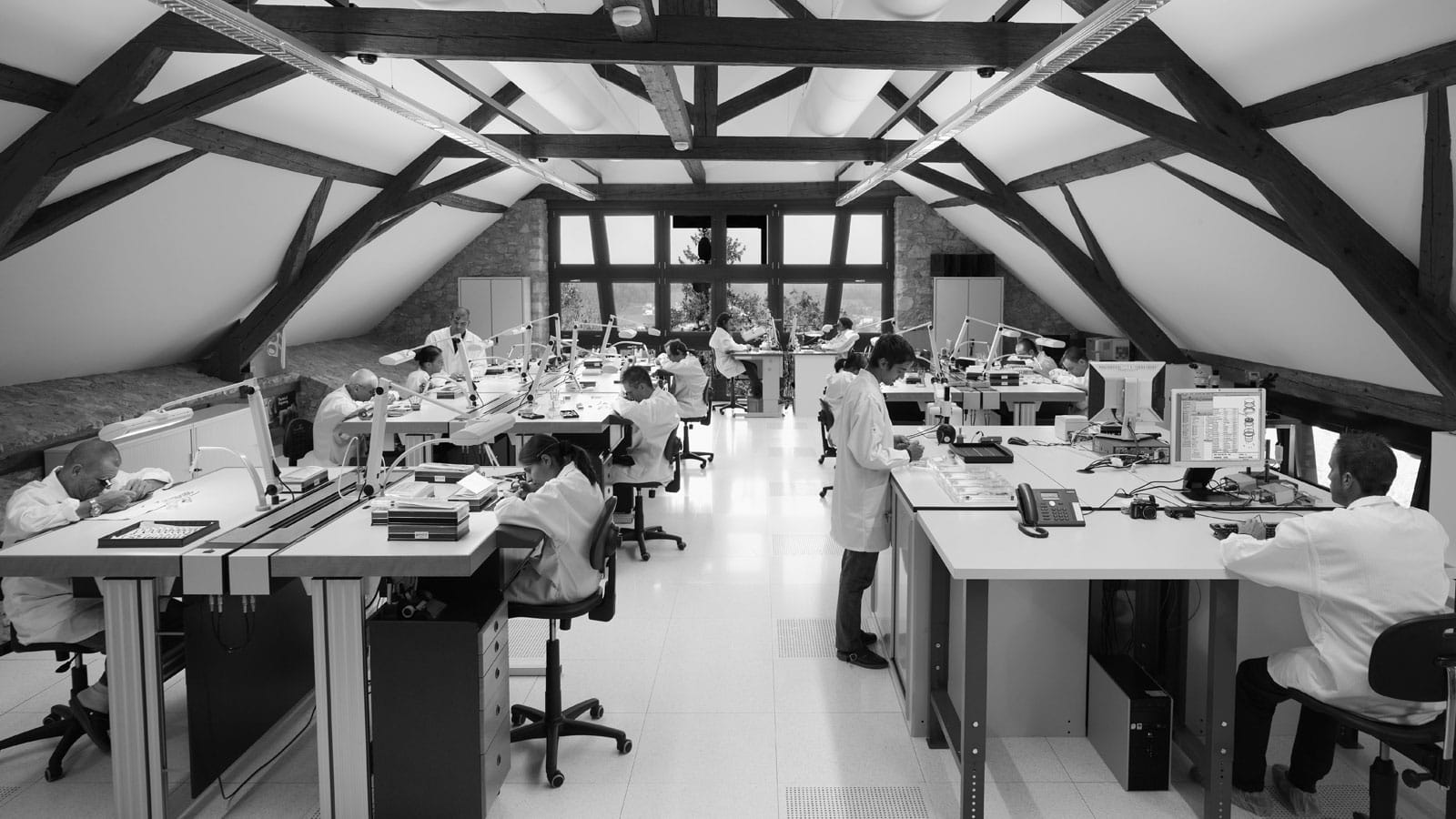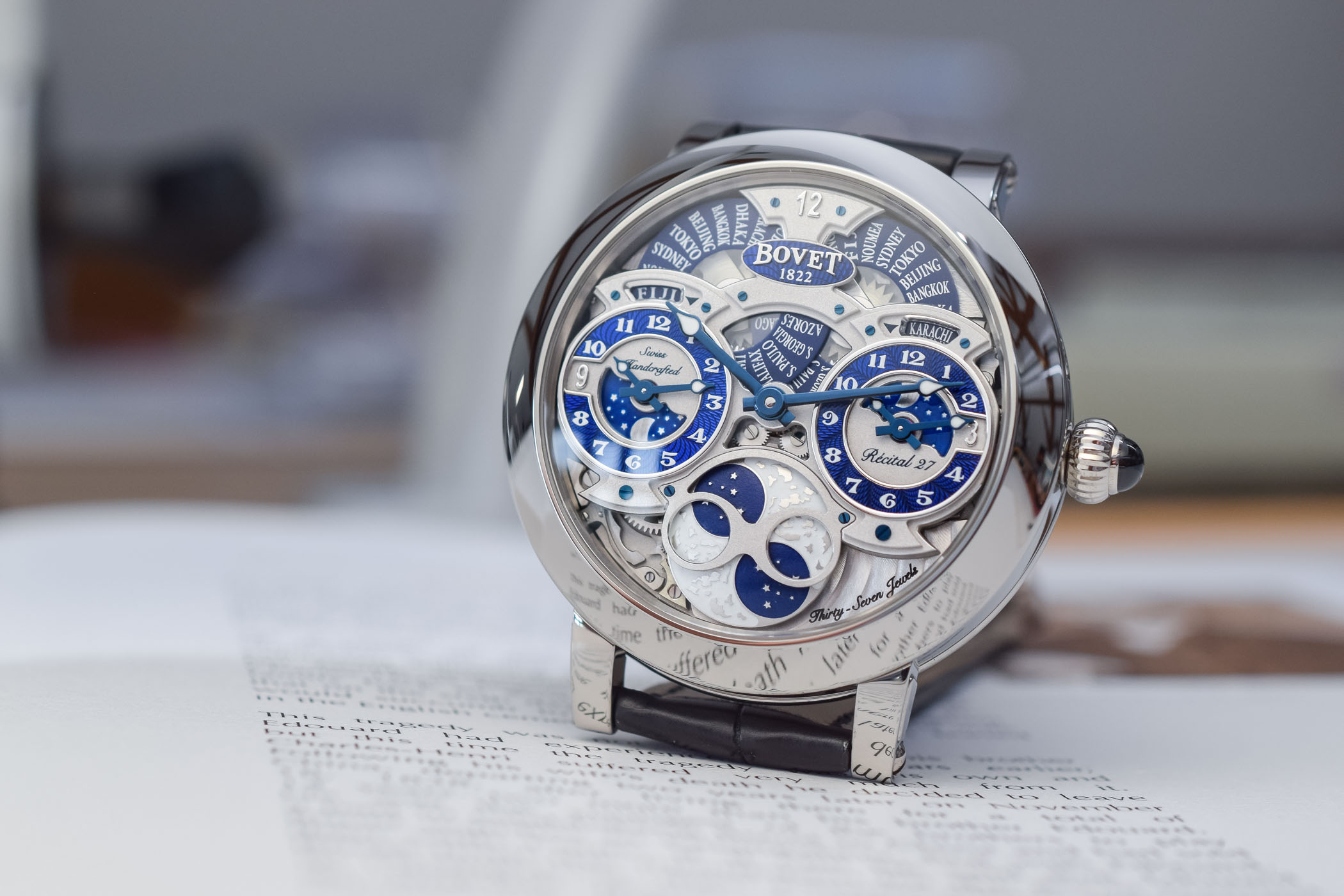Bovet
Swiss independent luxury watch manufacturer

Bovet Fleurier S.A. was founded in 1822 in London by Édouard Bovet and initially produced watches almost exclusively for the Chinese market. Édouard worked with three brothers, Alphonse, Frederic and Charles-Henri to manage shipping and production, and demand soon outstripped supply causing the company to contract with other Swiss watchmakers such as Guinand and Juvet Fleurier. By 1855, the watch market in China collapsed due to both foreign competition and a plague of Chinese counterfeits, and Bovet was sold to their manufacturing inspectors in Fleurier, Switzerland in 1864. Throughout the late 19th and 20th centuries, the brand was bought and sold many times, and production ceased for a time in 1950. In 2001, Pascal Raffy purchased the company and then acquired movement, dial and gem setting manufacturers to establish a vertically integrated company. The luxury brand produces watches in low volume with about a third being unique pieces that are custom made-to-order. Pascal is the current president and sole owner of the company.
Since the beginning, Bovet focused on aesthetics with highly finished dials, cases and movements. The company is even credited with creating the first exhibition caseback to showcase decorated movements. Luxury pocket watches in 18K gold with elaborately painted enamel casebacks, enamel dials, bezels set with pearls or gemstones, and painstakingly decorated movements were the norm for Bovet in the early 19th century. Miniature paintings have always been a hallmark of the brand and became a favorite of the Emperor of China. Polished lacquer is now used for the company’s miniature paintings, requiring successive firings and polishing as an artisan creates a one-of-a-kind dial. Mother-of-pearl is the preferred material for painted dials as the shimmering iridescence enhances the finished image. Detailed engraving of dials, cases and movements is also common with Bovet pieces and collectors often collaborate with the company as their watch is produced. For almost two centuries, Bovet has been a leader in the decorative arts of watchmaking.
Beyond painting and engraving, Bovet creates some of the most complex and openworked pieces in the industry. The partnership with Italian car design studio Pininfarina in 2007 brings unique aesthetics to the company’s renowned mechanical complexity. The Pininfarina OttantaSei Tourbillon launched in 2010 to celebrate Pininfarina’s 80th anniversary, giving equal weight to the time display, flying tourbillon and power reserve indicator (in their three respective registers). The dial, caseback and sides of the case are covered with sapphire crystal, allowing for an unusually open view of the mechanics. In 2018, Bovet won the “Aiguille d’Or” at GPHG (the Oscars of watchmaking) for the Récital 22 Grand Récital. This piece features many of the best attributes of the brand, such as a complex openwork aesthetic, hand-painted hemisphere of the Earth displaying the hours (with a revolving moon) and a unique 5-day patented, double-sided flying tourbillon (fully visible from both sides) representing the sun. This blend of haute horology with astronomy is one of the ongoing themes of the brand with other pieces including the Shooting Star and Astérium.
In 2010, Bovet introduced the Amadeo convertible case, allowing a watch to be used as a wristwatch, pocket watch or table clock without the need for tools. The 2018 Edouard Bovet Flying Tourbillon is an excellent example, marking 200 years since Edouard Bovet first left for China. The in-house movement (caliber 16BM04-TT) features a 10-day power reserve, triple time-zone (with hemispherical Earth maps) and double-sided flying tourbillon, and they even manufacture the hairsprings via sister company Dimier. Two hemispherical domes representing the Earth provide additional 24-hour time zones and are engraved and lacquered by hand. The movement itself is intricately engraved with floral patterns and the upper dial features a blue lacquered guilloché pattern.
Combining artistic excellence with highly complex in-house movements distinguishes Bovet as one of the most preeminent luxury watchmakers in the world. The brand produces less than 2,000 watches per year, many of which are custom orders, and many of its artisans are women (rare for traditional European watchmaking).














